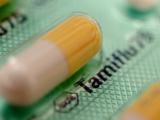Dec 16, 2009 (CIDRAP News) – Novartis's pandemic H1N1 flu vaccine generated stronger immune responses when it was combined with an adjuvant than when used alone, though both formulations yielded good results, according to a report published by the New England Journal of Medicine.
The authors published a preliminary report in September showing that the vaccine formulation containing Novartis's proprietary adjuvant, MF59, generated an immune response deemed likely to be protective. The final report, released today, says the nonadjuvanted formulation also elicited a good immune response albeit less intense than the adjuvanted version.
"The addition of MF59 adjuvant to 2009 influenza A(H1N1) monovalent vaccine increases the speed and magnitude of the antibody response; however, nonadjuvanted vaccine also induced satisfactory immune responses, which is consistent with early reports of other 2009 H1N1 subunit vaccines," says the updated report, written by a team of European researchers, including one from Novartis.
The study was among the first to show that one dose of H1N1 vaccine was sufficient to generate a good immune response in adults—findings that came as a big relief to public health officials who were worried about the vaccine supply and timing.
The researchers tested the vaccine in three different doses, with or without MF59, in 176 adults between the ages of 18 and 50. Three weeks after the initial dose, volunteers who received the adjuvanted vaccine showed stronger immune responses than those who received the nonadjuvanted formulation.
Antibody responses were measured by hemagglutination inhibition (HI) and microneutralization. At 21 days, HI and microneutralization, respectively, showed promising immune responses in 77% to 96% and 92% to 100% of volunteers who received the adjuvanted vaccine. By comparison, the two methods showed good responses in 63% to 72% and 67% to 76% of those who received the nonadjuvanted formulation. The difference shown by microneutralization was significant.
Both vaccine formulations were well tolerated, but pain at the injection site was more common with the adjuvanted version, the report says.
Earlier this year the US Department of Health and Human Services (HHS) ordered a supply of MF59 and another adjuvant, ASO3, for possible use to stretch the supply of H1N1 vaccines. In July an HHS official put the amount of the combined order at 119 million doses.
So far HHS has not moved to use the adjuvants. MF59 has been used for years in Europe, but no adjuvanted flu vaccine has ever been licensed in the United States, and bringing one to market would require clearing regulatory hurdles or getting an emergency use authorization from the Food and Drug Administration.
Novartis is currently testing a new facility in Holly Springs, N.C., that is equipped to make MF59 as well as cell-culture-based flu vaccine. The company said in November that the facility would be ready to start producing the adjuvant as early as this month.
Clark TW, Pareek M, Hoschler K, et al. Trial of influenza A (H1N1) 2009 monovalent MF59-adjuvanted vaccine. N Engl J Med 2009 Dec 17;361(125):2424-35 [Full text]
See also:
Sep 10 CIDRAP News story on preliminary results of Novartis vaccine trial
http://www.cidrap.umn.edu/cidrap/content/influenza/swineflu/news/sep1009vaccine.html




















